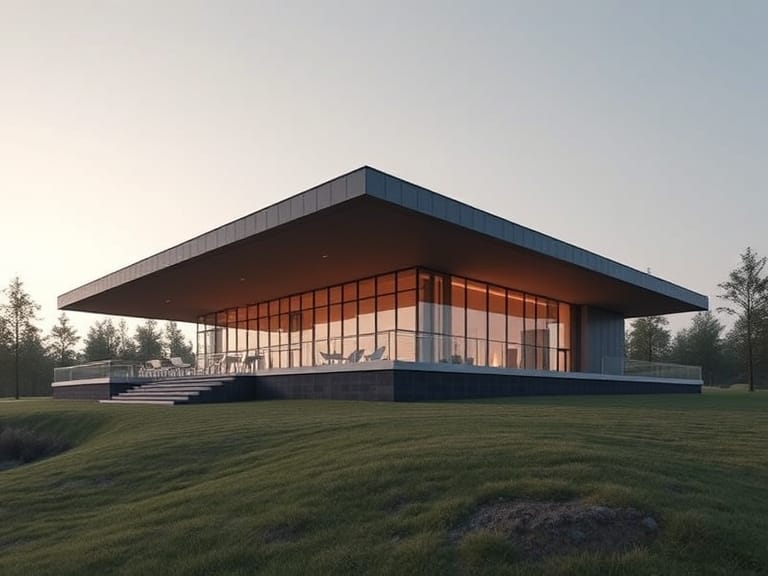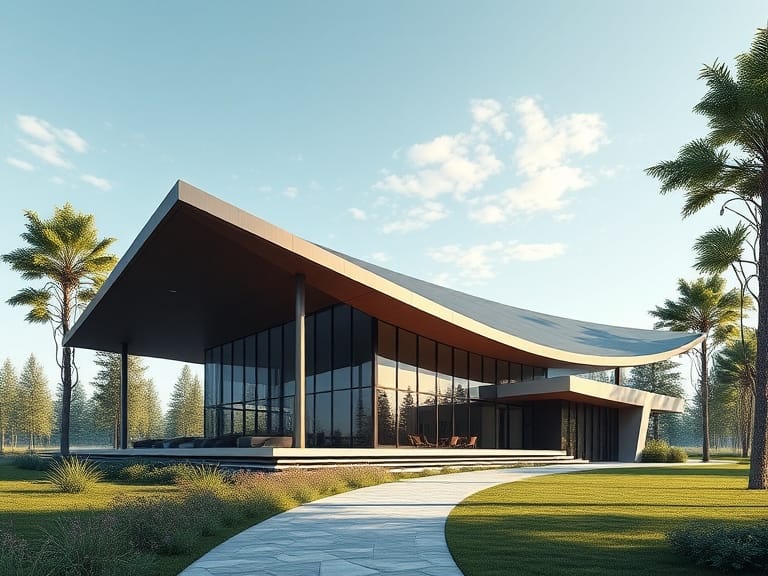
Roof repair costs are a pivotal aspect of homeownership that every homeowner needs to comprehend. Numerous conditions can necessitate roof repairs, ranging from weather-related damage to regular wear and tear over time. Understanding the factors influencing roof repair costs is essential, as it allows homeowners to budget appropriately and avoid unexpected financial burdens. An offhand approach to repair needs can lead to larger issues down the line, ultimately escalating costs significantly.
Common scenarios prompting roof repairs include storm damage, leaks, and aging materials. For instance, a severe thunderstorm may result in shingles being blown off or damaged, requiring immediate professional intervention. Similarly, persistent leaks can compromise the integrity of a home and escalate repair costs if not addressed swiftly. Moreover, roofs that reach the end of their useful life may show signs of wear, such as discoloration or sagging, signaling the necessity for repairs or replacement. These scenarios underscore the importance of regular roof inspections to detect potential problems early, which can help keep repair costs manageable.
Understanding the factors that contribute to the variability of roof repair costs is key for homeowners. Costs may fluctuate based on the extent of the damage, roofing materials, and labor rates in the area, among other considerations. By educating themselves on these elements, homeowners can make more informed decisions, select timely repairs, and appropriately allocate financial resources. Ultimately, a proactive approach to roof maintenance not only enhances the longevity of the roof but also safeguards the homeowner’s investment, making it imperative to grasp the various factors influencing roof repair costs.
Types of Roof Damage
Understanding the factors influencing roof repair costs begins with an examination of the various types of damage that can affect a roof. Each type has its own unique implications for both the repair process and the associated costs. Common types of roof damage include leaks, missing shingles, and structural damage, each presenting specific challenges and varying degrees of severity.
Leaks are among the most prevalent issues faced by homeowners. They can stem from multiple sources, such as aged roofing materials, poor installation, or damage caused by severe storms. A minor leak may require simple patching, while significant leaks may necessitate extensive repairs or even a full roof replacement, drastically affecting overall costs. Prompt attention to leaks is critical, as unchecked water intrusion can lead to further complications, such as mold growth and structural compromise.
Missing shingles present another common roofing issue. This situation often arises due to strong winds, poor installation, or deterioration over time. The absence of shingles exposes the underlying layers to the elements, making the roof more susceptible to leaks and water damage. Repairing missing shingles is typically a straightforward process, but if damage similar to rotting wood or mold is found beneath, the costs can escalate significantly. Evaluating the extent of missing shingles is essential for accurate cost estimation.
Structural damage is perhaps the most severe type of roof issue. This can result from prolonged moisture exposure, debris impact, or inadequate support systems. When the integrity of the roof structure is compromised, repair costs can increase dramatically. Repairs might involve reinforcing rafters, replacing damaged materials, or, in extreme cases, rebuilding parts of the roof entirely. Homeowners must be vigilant in identifying signs of structural damage early to mitigate more substantial expenses in the future.
In conclusion, the key to understanding the factors influencing roof repair costs lies in recognizing the diverse types of roof damage. By acknowledging and addressing these issues promptly, homeowners can better navigate repair expenses and ensure their roofs remain in optimal condition.
Roofing Materials and Their Costs
When it comes to roof repair, one of the primary considerations is the roofing material used on the home. The choice of material not only influences the aesthetic appeal of a property but also plays a significant role in determining understanding the factors influencing roof repair costs. Different materials come with varied price points, durability, and maintenance requirements, all of which can contribute to the overall expenditure associated with roof repairs.
Among the most common roofing materials are asphalt shingles. These are popular due to their affordability and versatility. Generally, asphalt shingles can cost between $90 to $100 per square (100 square feet), depending on the quality and brand. Although relatively inexpensive, their lifespan is around 15 to 30 years, which means they may require repair or replacement sooner than more durable materials, potentially increasing repair costs over time.
Metal roofs, on the other hand, are gaining traction due to their longevity and energy efficiency. The cost of metal roofing can range from $120 to $900 per square, depending on the type of metal used and the complexity of the installation. While the initial investment is higher, metal roofs can last 40 to 70 years, which could translate to lower repair costs in the long run due to less frequent replacements.
Tile roofs, often seen in Mediterranean-style architecture, offer a distinct aesthetic appeal and strong durability. Costs typically range from $300 to $1,000 per square, making them one of the more expensive roofing options. However, with a lifespan exceeding 50 years, the long-term benefits in understanding the factors influencing roof repair costs can be significant, given their resistance to weather and potential damage.
Ultimately, homeowners must consider not only the initial costs of roofing materials but also their lifespan and maintenance requirements. Each material presents unique advantages and disadvantages that can significantly influence future repair costs.
Geographical Influence on Repair Costs
When considering roof repair costs, geographical influences play a pivotal role. Different regions exhibit distinct climate conditions that directly impact the nature and frequency of roofing issues. For instance, areas experiencing extreme weather events, such as hurricanes or severe snowfall, tend to require more robust roofing systems and more frequent repairs. As a result, homeowners in these locales often face higher roofing repair costs compared to those in more temperate climates, where roof longevity may be extended due to milder weather patterns.
Additionally, local labor costs can significantly affect the overall expense of roof repair services. Urban areas often witness heightened competition among roofing contractors, which can lead to competitive pricing. Conversely, rural regions may have fewer available professionals, potentially driving up labor costs due to scarcity. This variation underscores the importance of understanding the factors influencing roof repair costs in specific geographic locales.
Accessibility is another crucial component when assessing geographical impacts on roofing expenses. Difficult-to-reach roofs, common in hilly or densely populated urban environments, require specialized equipment and increased labor hours to safely effect repairs. In contrast, easily accessible rooftops can lead to lower overall repair costs due to reduced labor time and simpler logistical considerations.
In summary, recognizing the geographical factors influencing roof repair costs—such as regional climate challenges, labor availability, and roof accessibility—enables homeowners to make informed decisions regarding roof maintenance and repairs. By understanding these dynamics, property owners can better anticipate potential expenses and plan for necessary services accordingly.
Labor Costs and Pricing Structures
When considering the various elements of roof repair costs, labor prices are a significant factor that cannot be overlooked. Labor costs can vary greatly depending on several aspects, including the complexity of the repair work and the contractor’s level of experience. Roof repairs can range from minor fixes, such as patching up leaks, to more extensive projects, like replacing large sections of roofing materials. Naturally, more complex jobs will typically incur higher labor costs due to the increased skill and time required to complete them efficiently.
Moreover, the pricing structures used by contractors can differ widely. Some contractors charge a flat rate for specific types of repairs, while others may base their pricing on an hourly rate. Hourly rates can vary significantly across regions, dependent on local labor market conditions. It’s worth noting that a contractor’s experience and reputation can further influence their labor costs. Established professionals often charge more due to their track record of delivering high-quality work, but this can lead to better outcomes in the long run, potentially reducing future repair costs.
Prior to initiating any roofing repair project, it is advisable for homeowners to obtain multiple quotes from different contractors. This practice allows for comparisons of not just prices, but also the scopes of work proposed. Understanding the factors influencing roof repair costs is essential for making informed decisions. With varying pricing structures and contractor experiences, being equipped with thorough information will enable homeowners to select the service that best meets their needs and budget. Ultimately, taking the time to shop around can lead to better deals and quality outcomes. Using multiple estimates is an effective strategy in navigating the landscape of labor costs in roof repair.

The Importance of Roof Assessment
Before engaging in any roof repairs, it is crucial to conduct a thorough roof assessment. This professional evaluation serves as the foundation for understanding the condition of the roof and the specific repairs required. A roof assessment typically involves various factors, including the examination of shingles, structural integrity, drainage systems, and underlying materials. By obtaining a comprehensive assessment, homeowners can prioritize necessary repairs, ensuring that they address the most pressing issues first.
One of the primary benefits of a professional roof assessment is its ability to prevent further damage. Roofing problems can often start small, such as minor leaks or damaged shingles, but can escalate quickly if left unattended. A timely assessment helps identify these problems early, allowing homeowners to take corrective action before they lead to extensive damage, which can incur significantly higher repair costs. By understanding the factors influencing roof repair costs, property owners can make informed decisions about the necessary interventions.
Additionally, proactive roof assessment can have lasting implications on the overall repair costs. When issues are identified and rectified at an early stage, the extent of necessary repairs is often reduced, leading to more manageable expenses. For instance, addressing a roof leak promptly may only require patching, while neglecting it may result in water damage to interior areas, necessitating a full roof replacement. Moreover, a professional evaluation can provide insights into the remaining lifespan of the roof, helping homeowners budget for future replacements or extensive repairs. In this way, a thorough roof assessment can ultimately save time and money, ensuring that property owners maintain a secure and functional roof over their heads.
Impact of Seasonality on Roof Repair Costs
Seasonality plays a crucial role in shaping the costs associated with roof repairs. Understanding the factors influencing roof repair costs requires an analysis of different times of the year when roofing projects may be more or less expensive. The demand for roofing services can fluctuate significantly with the changing seasons, which directly impacts pricing. For instance, spring and summer often see an uptick in demand due to favorable weather conditions, prompting contractors to raise their prices accordingly. In contrast, during the fall and winter months, fewer projects are typically undertaken, potentially leading to lower costs. Therefore, scheduling roofing repairs during off-peak seasons can be an effective strategy for minimizing expenses.
Weather conditions are another key element that can affect the overall cost of roof repairs. Heavy rainfall, snow, or extreme temperatures can impede work or even render projects unsafe, which may lead to increased labor costs or delays. Additionally, certain seasons bring specific weather-related issues; for instance, winter may expose roofs to ice damming while summer storms may lead to leakages. These seasonal challenges necessitate timely repairs, and the urgency associated with weather-related damage can ultimately influence repair costs.
Moreover, contractor availability is often contingent on the season. During busy months, reputable contractors may have a backlog of projects, limiting their availability. This scarcity can lead to higher charges for services as the demand tends to outstrip the supply of qualified labor. Conversely, during quieter periods, homeowners may have more options for skilled contractors, often at more competitive rates. Understanding these seasonal dynamics is essential for homeowners looking to arrange affordable roof repairs and make informed decisions about timing. By taking seasonality into account, one can navigate the complexities surrounding understanding the factors influencing roof repair costs more effectively.
Insurance Considerations
When assessing the financial implications of roof repair, it is essential to understand the role of insurance. Homeowners typically rely on their homeowner’s insurance policy to help mitigate costs associated with roof damage. Different policies offer varying levels of coverage, thus it is imperative for homeowners to review their policies carefully to ascertain what types of damage are included. Most standard homeowner’s insurance policies cover specific damage caused by named perils, such as storms, hail, or fire. However, damage resulting from a lack of maintenance or wear and tear may not be included, which can lead to significant out-of-pocket expenses.
Navigating the insurance claims process can also present challenges. Homeowners should document the damage thoroughly, providing photographic evidence and detailed accounts of the incident to support their claim. This documentation can play a crucial role when working with the insurance adjuster. Understanding the factors influencing roof repair costs extends beyond the repairs themselves; it encompasses the interactions between homeowners and their insurance companies. Various claims can impact insurance rates, so evaluating the risks before filing a claim is a prudent approach.
Moreover, it is vital for homeowners to have a clear comprehension of their deductible amounts, as this will affect how much of the repair costs are actually covered. If the estimated costs of repairs are lower than the deductible, it may be more economical to pay for repairs out of pocket rather than submit a claim. This nuanced approach aids homeowners in making informed financial decisions. Ultimately, understanding one’s coverage and the nuances of the claims process empowers homeowners to effectively combat unexpected roof repair costs and ensure proper financial planning for their home maintenance needs.
Conclusion and Key Takeaways
In conclusion, a comprehensive understanding of the factors influencing roof repair costs is essential for homeowners seeking to maintain the integrity and value of their property. From the type of materials used to the complexity of the roof’s design, numerous elements come into play when determining the overall expense of roof repair. Recognizing these factors not only aids in informed decision-making but also assists in estimating accurate budgets for maintenance works.
One significant factor is the age and condition of the roof. Older roofs often require more extensive repairs or even complete replacements, which can lead to increased costs. Additionally, local climate and weather conditions can heavily influence repair costs, as roofs may be more susceptible to damage in certain environments. Understanding these regional variances allows homeowners to make smarter choices regarding maintenance schedules and methods.
Furthermore, the choice of roofing contractor plays a crucial role in the overall cost, as different professionals may offer varying rates and quality of service. Homeowners should invest time in researching local contractors, obtaining multiple quotes, and checking reviews to ensure they receive a fair price for quality work. Proper planning and regular inspections can mitigate unforeseen repair expenses, ultimately saving homeowners money in the long run.
In summary, effectively managing roof repair costs involves a clear grasp of the factors that influence them. By considering aspects such as material choices, roof age, geographical location, and contractor selection, homeowners can make well-informed decisions. This proactive approach can lead to optimal repairs, ensuring that the roof serves its purpose effectively for years to come, while also sustaining the value of the home. Implementing these strategies will ultimately contribute to sound financial management in maintaining one of the most critical components of any dwelling.


